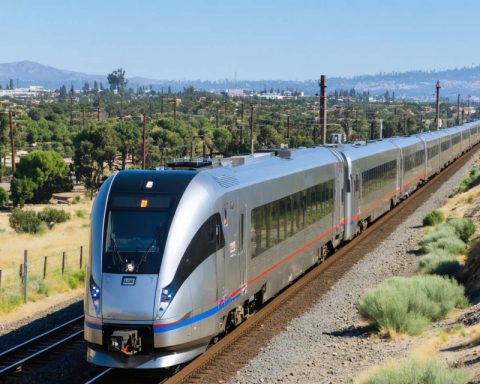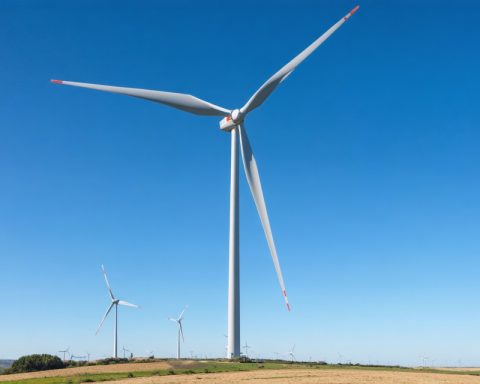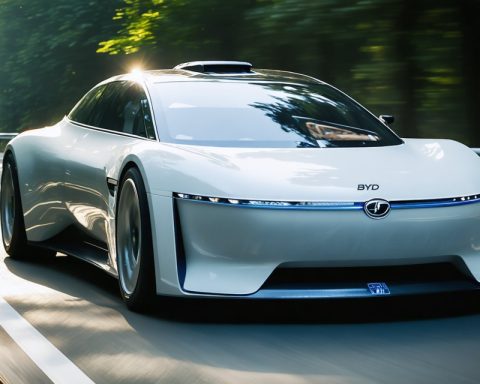- California surpasses a milestone with 178,000 electric vehicle (EV) chargers, outnumbering 120,000 gasoline dispensers.
- The state emphasizes convenience with community-centric EV charging stations and home units, promoting eco-friendly options.
- Despite political challenges, California is dedicated to expanding EV infrastructure, with plans for complete electrification within a decade.
- EVs constitute 25% of vehicles sold in California recently, including hydrogen fuel cell vehicles, while gasoline vehicles lose market share.
- California leads in the national EV market, making up nearly 30% of all U.S. EV sales, highlighting its forefront position in EV adoption.
- The state’s pioneering efforts capture global attention, with the electric revolution progressing robustly in California.
The streets of California pulse with a quiet revolution. While electric vehicles (EVs) may still feel like a novelty on Japanese roads, the scenario in California is remarkably different. A seismic shift is underway, with electric charging stations outnumbering traditional gas pumps for the first time. According to the state’s Energy Commission, California boasts approximately 178,000 EV chargers compared to around 120,000 gasoline dispensers—a striking testament to its bold commitment to a sustainable future.
The surge in EV infrastructure is not just happening at grandiose charging hubs but is also seen in neighborhood-share stations and home units open to the public. These community-centric chargers offer convenience and affordability, leading to their burgeoning popularity among eco-conscious citizens.
Despite facing national political winds that have at times pushed against the EV tide, California stands firm in its resolve. The state continues to expand its network of EV chargers, making ambitious plans to address underserved areas. With a visionary aim for complete electrification within the next decade, California positions itself as a trailblazer, setting both benchmarks and aspirations for others to follow.
The data paints a compelling picture: in the past two years, one in four vehicles sold in California was powered by electricity, a statistic that includes hydrogen fuel cell vehicles. While gasoline vehicles, including diesel, remain, their dominance erodes steadily. Furthermore, California claims a significant share of the national EV market, with the state’s buyers accounting for nearly 30% of all EV sales across the United States—a figure that underscores its leading position in EV adoption.
This transformation captures global attention. Is the momentum from California’s pioneering efforts destined to inspire a broader shift? As the engine of change continues to roar through the Golden State, the world watches closely. The message is clear: the electric revolution is not a distant dream; it’s happening now, and California is at its forefront.
California’s EV Revolution: What You Need to Know Now
A Deeper Dive into California’s EV Surge
California’s commitment to electrification is not merely a regional trend; it epitomizes a global shift towards sustainability. With the state’s ambitious rollout of EV charging infrastructure, it is essential to explore facets that underscore this revolution and draw insights that can be applied broadly.
Why California?
California has always been at the forefront of technological and environmental innovation. It boasts a robust economy that supports green initiatives and an environmentally conscious populace driving demand for renewable energy solutions.
How-To Steps & Life Hacks for EV Owners in California
1. Finding Charging Stations: Utilize apps like PlugShare or ChargePoint to locate the nearest stations.
2. Charge Efficiently: Charge during off-peak hours to save on electricity costs and reduce grid strain.
3. Incentives: Take advantage of state incentives such as the Clean Vehicle Rebate Project (CVRP) for financial savings on EV purchases.
4. Home Charging: Consider installing a Level 2 home charger for faster and more convenient charging.
Market Forecast & Industry Trends
The EV market is experiencing exponential growth. Projections suggest that by 2030, EVs could make up to 30% of all vehicles in California. This trend is expected to continue, driven by technological advancements, decreasing battery costs, and increased consumer demand.
Reviews & Comparisons
Comparing charging networks can offer insights into reliability and cost. Networks like Tesla Supercharger, EVgo, and Electrify America provide varying features and pricing:
– Tesla Supercharger: Known for fast charging speeds and extensive network coverage specific to Tesla vehicles.
– EVgo: Offers fast charging and a wide network, compatible with multiple vehicle brands.
– Electrify America: Provides ultra-fast charging, ideal for long-distance travel, with competitive per-minute pricing.
Controversies & Limitations
While California leads in EV adoption, challenges persist:
– Infrastructure Gaps: Rural areas lag in charging infrastructure, necessitating targeted investment.
– Grid Reliability: Increased EV adoption may strain the electrical grid, raising concerns about energy sustainability and supply reliability.
Features, Specs & Pricing
The availability of numerous EV models in California includes the latest features:
– Tesla Model 3: Range of up to 358 miles, starting around $41,000.
– Chevrolet Bolt EV: Range of 259 miles, approximately $31,000.
– Nissan Leaf: Range up to 226 miles, starting near $27,000.
Security & Sustainability
EVs contribute to reducing carbon emissions and improving air quality. However, the sourcing of battery materials poses sustainability concerns which manufacturers are addressing through recycling and ethical sourcing initiatives.
Insights & Predictions
California will likely influence national and global policies on EVs. Manufacturers are expected to further prioritize electric models in their fleets, and investment in renewable energy will parallel EV growth.
Pros & Cons Overview
– Pros: Reduced emissions, lower operational costs, and government incentives.
– Cons: Initial purchase cost, charging infrastructure limits, and battery durability concerns.
Quick Tips for Prospective EV Owners
– Evaluate Your Driving Needs: Consider range requirements and charging options for daily commutes.
– Research Incentives: Stay informed on both state and federal incentives to maximize savings.
– Test Drive: Experience different models to find the right fit in terms of comfort and performance.
California’s role as a leader in the global shift towards electrification cannot be understated. Its initiatives and policies provide pivotal data points for other states and countries looking to enhance their EV infrastructure.
For more information, check out the California Energy Commission.















